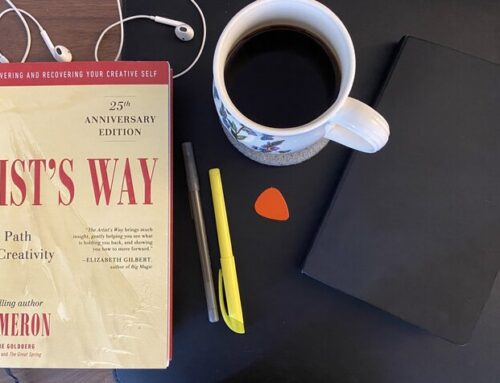In today’s fast-paced world, it can feel like there’s little time for anything beyond the essentials—work, errands, family, and other commitments. With so much on our plates, many people find it difficult to carve out time for one of the most fulfilling and important parts of life: creativity.
You don’t have to be a full-time artist or a professional writer to feel the benefits of creativity. Whether it’s painting, writing, crafting, or simply thinking outside the box, creativity enriches your life, improves your problem-solving skills, and brings joy. But how can you make time for creativity when your schedule is already packed?
The answer lies in understanding that creativity isn’t just something you do when you have large chunks of free time—it’s something you can incorporate into your daily life, no matter how busy you are.
Why Creativity Matters
Before diving into strategies on how to make time for creativity, it’s important to understand why creativity should be a priority, especially in a busy life. Creativity isn’t just about making art—it’s about how you engage with the world. It’s in the way you solve problems at work, how you organize your home, and even how you plan a meal. Creativity leads to innovation and personal growth. It’s what allows you to bring fresh ideas and energy to all areas of your life.
Here are a few key reasons why making time for creativity matters:
1. Stress Relief
Engaging in creative activities can be incredibly relaxing and therapeutic. When you allow yourself time to focus on a creative task, it helps you decompress, providing an escape from daily pressures.
2. Boosts Problem-Solving Skills
Creativity trains your brain to think in new ways. The more time you spend being creative, the more flexible and innovative your thinking becomes. This can lead to better problem-solving skills in both your personal and professional life.
3. Increases Happiness and Fulfillment
Doing something creative that you love can bring a sense of accomplishment and joy. It connects you to your passions and allows you to express yourself, which leads to greater life satisfaction.
4. Improves Focus and Mental Clarity
Engaging in a creative activity can help clear your mind and improve focus. It allows you to step away from distractions, center your thoughts, and approach your day with renewed clarity.
Now that we understand the importance of creativity, let’s look at how to make time for creativity even when you’re busy.
How to Make Time for Creativity: Practical Steps
No matter how full your schedule is, you can still create space for creativity. Here are several strategies to help you prioritize creativity in your busy life:
1. Shift Your Mindset: Creativity Doesn’t Require Huge Time Blocks
One of the most common misconceptions about creativity is that you need hours of uninterrupted time to create something worthwhile. While having extended creative time can be beneficial, it’s not always necessary. You can find creative moments in small windows of time.
Start by recognizing that creativity doesn’t have to be confined to specific times or tasks. It’s not just about painting a masterpiece or writing a novel—it’s about incorporating creative thinking into your daily life.
Instead of waiting for a free afternoon to “be creative,” start looking for smaller opportunities in your day. For example:
- Doodle in a notebook while on hold during a phone call.
- Write a few lines of a poem or journal entry during your lunch break.
- Think creatively about how to solve a work challenge while commuting.
When you reframe how you think about creativity, you’ll realize there are plenty of opportunities to engage with it throughout the day.
2. Prioritize Creativity in Your Schedule
If you’re serious about making time for creativity, it’s important to treat it like any other important task. Schedule time for creativity just like you would a work meeting or a fitness session. Block out time on your calendar to work on a creative project, and treat it as a non-negotiable appointment.
Even if it’s just 10 or 15 minutes a day, having dedicated time for creative work ensures that you’re consistently engaging with your creative side. The more you make creativity a priority in your schedule, the easier it becomes to build a habit of creating regularly.
Pro Tip: Try scheduling your creative time first thing in the morning before the day gets too busy, or late at night as a way to unwind.
3. Start Small and Build Momentum
When you’re busy, it’s easy to feel overwhelmed by the idea of starting a creative project. The trick is to start small. You don’t need to embark on a big, time-consuming project to engage with creativity. Small creative actions can add up over time, and they help build momentum.
For example:
- Write one page a day instead of trying to finish a chapter.
- Spend 10 minutes sketching an idea instead of aiming to complete an entire drawing.
- Create a mini version of a larger project you want to tackle in the future.
These small, consistent efforts make creativity more manageable and sustainable. Over time, they help you build the momentum you need to pursue bigger projects.
4. Combine Creativity with Everyday Tasks
One of the best ways to make time for creativity is to combine it with everyday tasks. You don’t have to separate creativity from the rest of your life—it can be integrated into your daily routines.
Here are a few ideas:
- Cooking: Experiment with new recipes or creative plating to turn mealtime into a creative outlet.
- Commuting: Use your commute as an opportunity to brainstorm ideas or listen to podcasts that inspire you.
- Exercise: Go for a walk and let your mind wander—often, physical activity helps spark new ideas.
- Chores: Turn a mundane task like cleaning into a creative challenge by reorganizing or redecorating a space in a fresh way.
By blending creativity with your regular activities, you’ll find more opportunities to engage your creative side without needing extra time in your day.
5. Develop a Creative Routine
Routines are powerful tools for productivity, and they work just as well for creativity. When you build creativity into your daily or weekly routine, it becomes easier to stay consistent.
Here’s how to create a creative routine:
- Set a Regular Time: Choose a specific time each day or week for creative activities. This could be in the mornings, after work, or on the weekends—whatever works best for your schedule.
- Keep it Simple: Start with a simple routine that you can stick to, even on busy days. Consistency is key.
- Use Rituals to Get Started: Use small rituals to signal the start of your creative time. It could be making a cup of tea, lighting a candle, or playing your favorite music. These rituals help put you in the right mindset for creativity.
By establishing a creative routine, you make creativity an integral part of your life rather than something you only do when you have free time.
6. Limit Distractions and Focus on Creating
In a busy world filled with distractions, it’s easy to let creativity take a back seat. But if you want to make time for creativity, it’s essential to limit distractions during your creative sessions.
Set aside specific times where you can focus solely on your creative work without interruptions. Turn off notifications, close unnecessary tabs, and let people around you know that you’re unavailable during this time.
Creating a distraction-free environment allows you to dive deeper into your creative process and make the most of the time you’ve set aside.
Pro Tip: If you find it difficult to limit distractions, try using a timer to work in short bursts (e.g., 25 minutes of focused creative time followed by a 5-minute break). This technique, known as the Pomodoro method, helps keep you on track and engaged with your work.
7. Embrace Imperfection
One of the biggest barriers to creativity is the fear of imperfection. Many people put off creative projects because they’re worried about the end result being less than perfect. But creativity isn’t about producing perfect work—it’s about the process of exploration, expression, and learning.
When you make time for creativity, it’s important to let go of the need for everything to be polished. Embrace imperfection as part of the creative journey. Allow yourself to experiment, make mistakes, and try new things without worrying about the final outcome.
The more you practice letting go of perfection, the more confident and productive you’ll become in your creative endeavors.
How Creativity Benefits Other Areas of Your Life
Making time for creativity isn’t just about the creative process—it also has a positive impact on other areas of your life. Here’s how creativity benefits you beyond artistic expression:
1. Improved Work Performance
Creativity can enhance your performance at work. By thinking creatively, you can approach challenges from new angles, generate innovative solutions, and bring fresh ideas to your team or projects.
When you regularly engage in creative activities, you train your brain to think more flexibly and dynamically, which translates into better performance in the workplace.
2. Better Mental Health
Creativity has been shown to reduce stress, anxiety, and depression. Engaging in creative activities helps you process emotions, release tension, and shift your focus away from everyday pressures.
By making time for creativity, you prioritize your mental well-being, leading to a healthier, more balanced life.
3. Stronger Relationships
Sharing your creative work or collaborating with others on creative projects can strengthen relationships. Creativity fosters connection, empathy, and understanding—whether you’re working on a joint project with a friend or sharing your creative efforts with loved ones.
By bringing creativity into your interactions, you deepen your connections with others and create shared experiences that are meaningful and fulfilling.
4. Greater Personal Growth
Creativity is a powerful tool for personal growth. When you explore new creative avenues, you challenge yourself, step outside your comfort zone, and discover hidden talents. Each creative project becomes a learning experience that helps you grow and evolve as an individual.
By making time for creativity, you open the door to continuous learning and self-discovery.
Final Thoughts: Make Time for Creativity in Your Life
No matter how busy life gets, you can always find time for creativity. By shifting your mindset, prioritizing creative time, and integrating creativity into your daily routine, you can unlock the full benefits of creative expression.
Remember, creativity doesn’t require perfection or long hours—it just needs a little space to thrive. Whether you’re starting with small creative moments or building a larger routine, the important thing is to stay consistent and embrace the process.
Make time for creativity, and you’ll discover not only new ideas and projects but also a deeper connection to yourself and the world around you.
If you enjoyed these tips, be sure to check out my podcast Creative Space for more inspiration on how to live creatively, both in your work and everyday life. Until then, get out there and make time for creativity—whatever that looks like for you.
Photo by Malvestida on Unsplash





Leave A Comment